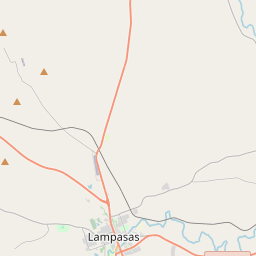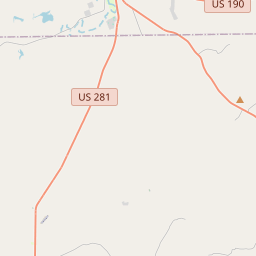Battle Branch
Historical marker location:












Battle Branch
This branch of Sulphur Creek was named for an event in the Horrell-Higgins Feud. On the morning of March 26, 1877, Tom and Mart Horrell were going to Lampasas to attend district court. En route, they were ambushed by gunmen hiding in the brush near this location. The Horrells returned fire and the attackers rode away. Mart took his wounded brother to a nearby residence and continued to town for help. He led a squad of Texas Rangers to the site, but officers never caught the attackers. Many believed a Higgins faction had set up the ambush. The feud would continue, with additional gunfighting, for several more months.
(2003)
As one of the most visible programs of the Texas Historical Commission (THC), historical markers commemorate diverse topics in Texas history, including: the history and architecture of houses, commercial and public buildings, religious congregations, and military sites; events that changed the course of local and state history; and individuals who have made lasting contributions to the state, community organizations, and businesses.
The state flower of Texas is the bluebonnet. The flower blooms in the spring and is a common sight along the highways and in fields throughout the state.
In 1852, Lampasas County was officially established, named after the Lampasas River that runs through the area. The county quickly became a prominent agricultural region, with cotton being the primary crop. The arrival of the Texas and Land Company railroad in 1882 further stimulated the local economy, as it facilitated trade and transportation in the area.
During the late 19th and early 20th centuries, Lampasas County also experienced economic growth due to the discovery of mineral resources. Manganese and zinc mining industries played a significant role in the county's development. Additionally, the city of Lampasas became a popular health resort destination, thanks to the therapeutic value of the local natural springs.
Throughout the years, Lampasas County has faced its fair share of challenges. The region went through difficult times during the Great Depression, with the decline of the agricultural industry. However, the county managed to bounce back and diversify its economy, embracing tourism and other industries. Today, Lampasas County remains a vibrant community with a blend of historical charm and modern development.
Lampasas County Timeline
This timeline provides a glimpse into the major events and milestones that have shaped the history of Lampasas County, Texas.
- 1854 - Lampasas County is founded and named after the Lampasas River.
- 1872 - The town of Lampasas becomes the county seat.
- 1882 - The Gulf, Colorado and Santa Fe Railway is completed through the county.
- 1885 - The first oil well in central Texas is drilled in Lampasas County.
- 1922 - The Hancock Springs Hotel, a popular health resort, is built.
- 1949 - The Fort Hood military reservation is established, impacting the county's economy.
- 1960s - The construction of the Highland Lakes dams brings tourism and recreation to the area.
- 1990s - The county experiences population growth and increased development.